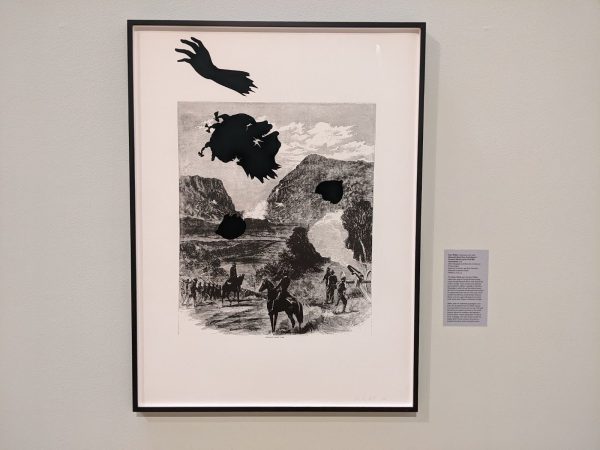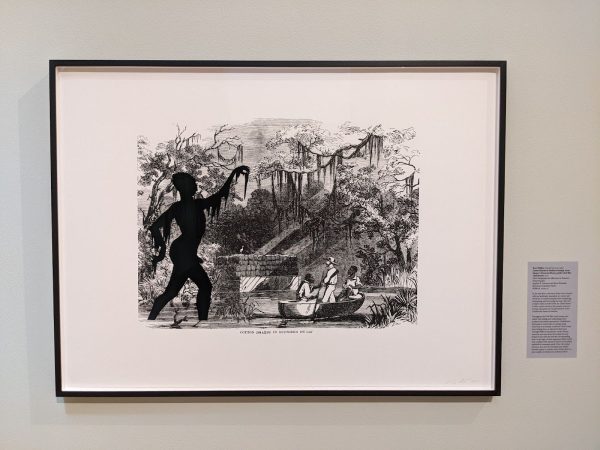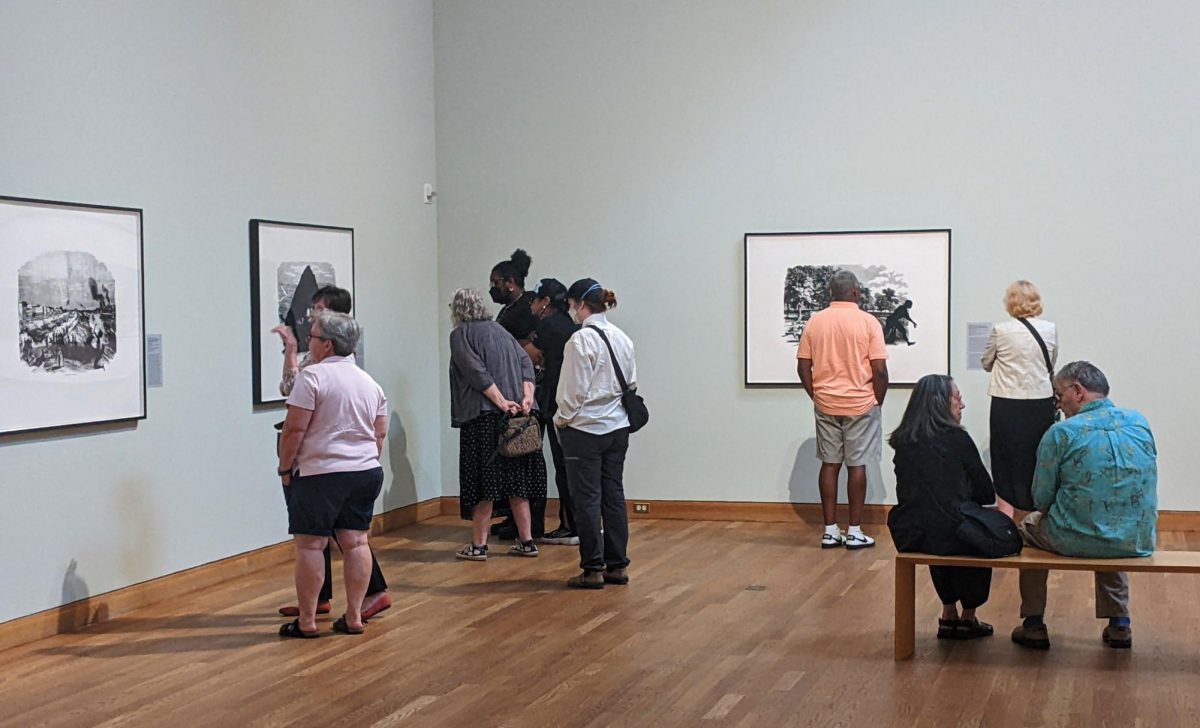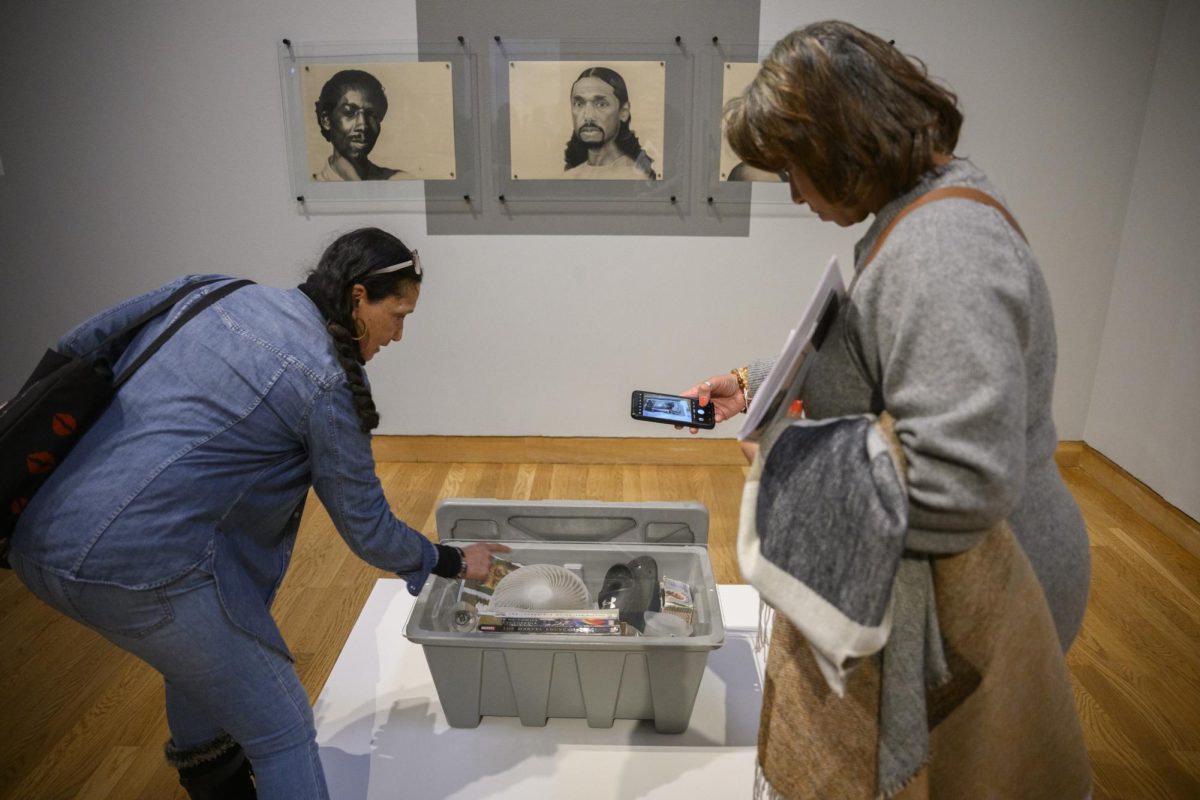This year’s Weisman Art Museum (WAM) fall exhibition peers into the shadows of America’s glorified history and beckons forth what has been disremembered.
WAM opened “Kara Walker: Harper’s Pictorial History of the Civil War (Annotated)” on Saturday. The exhibition consists of fifteen large-scale prints of scenes from the Civil War that were printed in “Harper’s Weekly,” annotated with the multimedia artist’s signature silhouettes.
Walker’s silhouettes explain the experiences, violent and otherwise, of Black people during the Civil War that have been excluded from the dominant historical narrative.
“Everything I’m doing is trying to skirt the line between fiction and reality,” Walker said in a companion video on view within the exhibition space.
Indeed, this exhibition prompts us to interrogate what we’ve come to accept as the reality of our national history and how and where it has been fictionalized.
The source material, “Harper’s Pictorial History of the Civil War,” published in 1866, sought to depict events from the Civil War “just as they occurred,” according to the WAM.
Professor Gwendolyn Dubois Shaw of the University of Pennsylvania explained in her keynote lecture coinciding with the exhibition that the editors “purposefully minimized the Black experience” while compiling the book.
In this way, Walker’s prints are not only revelatory but reclamatory as well.
The original engravings, ironically, portray a sort of pastoral serenity, even in their depictions of violence. Against these backdrops, Walker’s silhouettes, which possess a storybook sort of creepiness, visually disrupt the scenes and narratively disrupt the stories being presented.
In “Buzzard’s Roost Pass,” smoke puffs from a cannon and cannonballs appear as small bursts in the middle ground. Meanwhile, Walker’s annotations include the dismembered arm, head and breasts of a Black woman falling into the scene.
Historically, the scene at “Buzzard’s Roost Pass” existed at the midpoint between General William Sherman’s scorched-earth campaigns in Mississippi and Georgia, in which Sherman and his soldiers burned towns to the ground and destroyed all means of transportation.
Walker’s annotations consider the sexual violence against Black women that often occurred during these campaigns, the arm reaching out of the frame hinting at how this redacted violence extends throughout history.

Walker depicts the violence against Black people that persisted during the Civil War, a war supposedly meant to secure their freedom, alongside many different dimensions of Black life then and now.
In “Alabama Loyalists Greeting the Federal Gun-Boats,” the silhouette of a Black woman is projected onto the scene, crawling to her freedom amid the chaos. A Black child in the original engraving appears to crawl after her to their freedom.
The silhouette of a Black man with arms draped in moss poses majestically in the foreground, mirroring the trees surrounding the scene, in the piece “Cotton Hoards in Southern Swamp.”
The piece shows how white supremacy equates Black bodies as natural resources to exploit akin to the cotton they were forced to harvest. In this sense, the silhouette dominating the scene and dwarfing the boat below reclaims the power of the narrative.

“It was intense and horrifying,” said visitor Chris Mann of the exhibition. “But it does a good job of capturing the true range of human experience.”
Part of the gallery space is populated with a seating area of plush black leather chairs and a couch next to a bookshelf with Black historical representations in art and literature. Reflection is a key theme of this exhibition, and this space provides room for visitors to reflect on the art.
Opposite the seating area, visitors can submit postcards with their thoughts on the exhibition.
WAM’s exhibition, which works with Walker’s original 2005 exhibition of the same name, includes an array of original engravings depicting Civil War scenes by the American artist Winslow Homer.
The original engravings in conversation with Walker’s pieces call to mind what is missing from the scene, obscured by the glory of war.
In one engraving, a Black person dances for a crowd of white soldiers in a campfire scene. While the soldiers’ faces appear neutral, their true thoughts and feelings are obscured. Are they looking with interest? Derision? Do they really see this person as an equal?
What’s more, the Black person’s face is hidden from view.
The exhibition appears during a moment of reflection for the Weisman, as well. In 2022, it received grant funding for a Truth and Reconciliation Project coinciding with the repatriation of Mimbres cultural belongings of Indigenous peoples of the American Southwest.
The project, WAM said at the time, is part of ongoing diversity, equity, access and inclusion initiatives in its operations.
On an individual scale, visitors should consider their place in the history Walker’s work reveals, and how disremembering continues as we move into the future.














